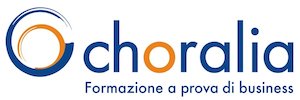In questo articolo di Tacy M. Byham, apparso su Training Industry, viene messo in discussione uno dei capisaldi della formazione aziendale; il modello “70:20:10”. Ma che cosa rappresentano esattamente questi numeri?
L’origine di questa espressione risale a circa 30 anni fa quando i ricercatori McCall, Eichinger e Lombardo hanno chiesto ad alcuni top leader ed executives quali esperienze fossero state tra le più formative della loro vita. Le loro risposte avevano evidenziato come il 70% delle loro conoscenze proveniva dal cosiddetto “learning on the job”, mentre il 20% dalle lezioni di qualche mentore o coach. Solamente il restante 10% era dato dalla formazione più tradizionale ed accademica in aula.
Da qui nasce la ratio “70:20:10”, che è stata adottata come un paradigma di apprendimento per concentrare gli sforzi di sviluppo in tutto il mondo. Tuttavia, mentre la formazione sul posto di lavoro (il 70%) è sicuramente di grande valore, può anche risultare la più difficile da mettere in pratica per i leader – specialmente quelli che hanno esperienza limitata in un determinato ambito.
Ci viene quindi automatico porci una seconda domanda: “Dobbiamo per forza seguire l’ordine della proporzione nel processo di apprendimento?”
In altre parole: dovremmo avere inizialmente esperienze sul lavoro, seguite dal coaching e terminare con l’apprendimento formale come suggerito dal rapporto “70:20:10”?
La risposta è: non sempre.
Infatti, è molto meglio spingere i futuri leader verso il successo attraverso lo sviluppo delle loro competenze con l’apprendimento formale/accademico che far loro imparare attraverso il meccanismo di prova ed errore.
Inoltre, la proporzione “70:20:10” è stata concepita ormai più di 30 anni fa, possiamo ritenerla ancora valida al giorno d’oggi?
È stato quindi effettuato un nuovo studio, ponendo ai leader di oggi la stessa domanda di 30 anni fa: da quali esperienze hanno imparato di più e come allocano il loro tempo dedicato alla formazione?
Le risposte sono un po’ cambiate.
Come si evince anche dal grafico, in realtà i leader assorbono maggiormente gli insegnamenti accademici e quelli derivanti dal coaching, mentre apprendono notevolmente di meno sul posto di lavoro rispetto a ciò che era stato evidenziato in passato.
Ciò detto, l’importante non è tanto la proporzione esatta ma, come in molte cose, la formazione migliore risiede nel giusto mix di apprendimento formale e informale.
Di seguito riportiamo l’articolo originale:
In part 1 of this blog series, I introduced the numbers 10,000, 66, and 31, and discussed the fact that they simply don’t add up. Now let’s discuss three often heard questions about 70:20:10.
What’s the Origin?
According to most sources, “70:20:10” became a learning catch-phrase about 30 years ago. Researchers McCall, Eichinger, and Lombardo asked C-level leaders to reflect on the best development experiences over their lifetimes. In other words, “What experiences in your life caused you to learn the most?” Their responses showed that 70 percent of their greatest learning moments came from experience or on-the-job learning, and 20 percent came from learning from others, which includes coaching and mentoring. The final 10 percent came from formal learning experiences like classroom training, web-based training, or industry conferences.
They never intended “the ratio” to represent the ideal amount of time spent on each of these activities—and especially not in the allocation of a training budget. Rather, it was meant to represent the fact that the richest development comes less from formal learning and more from real-world experience. As we all know, though, the foundation of formal learning is critical.
This misunderstood ratio or “framework” has now been adopted as a learning paradigm to focus development efforts around the globe. While the efforts that come from on-the-job learning (the 70 percent) are the most valuable, they also can be the hardest for leaders to envision—especially for frontline leaders who have limited experience with a task.
What Is the Right Order of Learning?
This challenge for first time leaders, feeling their way through leading a team for the first time, is exactly why we ask our next question: Is there a right order to learning? In other words, should we have experiences first, followed by coaching, and finish it up with formal learning as the 70:20:10 ratio would suggest?
The short answer: not always. In fact, DDI has revised the original 70:20:10 to 10:20:70. Let me tell you a story to illustrate why.
I don’t golf, but I have many friends who do. For years, they have been asking me to join them for a round of 18. While I could easily go hack my way through the game weekend-over-weekend and, over time, improve my game weekend-over-weekend, the slope of my improvement trajectory is limited. What’s more, I am likely to pick up many bad habits along the way. Instead, it would be far better for me to spend a weekend at a golf clinic (formal learning), then receive some on-the-course training from a coach or my friends (coaching/mentoring), and finally apply this learning in a nice round of 18 holes (experience).
Similarly, it is far better to set our new leaders up for success in their skill development (such as selling or coaching) with formal learning than to let them learn by trial-and-error. Indeed, as Alfred E. Neuman said, “The problem with learning from experience is that you always get the test before the lesson. Hence, DDI’s take on this development philosophy is that of 10:20:70. (To explore more of the challenges of first-time leaders you may want to check out my new book Your First Leadership Job: How Catalyst Leaders Bring out the Best in Others, with co-author Rich Wellins, available in May 2015.
Is 70:20:10 Still Relevant Today?
Though long-accepted, the ratio has never been validated with hard data, so DDI thought we’d take the opportunity to get a pulse while surveying 13,000 leaders for its Global Leadership Forecast 2014|2015. We asked leaders to tell us what experiences they learned from the most, as well as how they allocate their learning time? Their answers offer reason to rethink the 30-year-old philosophy.
The actual time leaders spend on learning is quite different than 10:20:70. As illustrated by the graphic above, in reality, leaders experience more formal learning and more learning from others—and significantly less on-the-job learning than we’ve been accustomed to believing. But is that effective? We wanted to know that, too.
In isolating the organizations with the highest-quality leadership development programs, we found the ratio to be very similar to how leaders actually spend their time. Both results show a doubling of formal learning time and a drop of 15 to 18 percentage points for informal, experiential learning.
Bottom Line
Let’s not underestimate the value of formal learning. Based on DDI’s Global Leadership Forecast 2014|2015 data, perhaps organizations should offer more consideration to that part of the mix. That being said, I don’t believe an exact ratio is as important as considering your audience and learning objectives. Rather, the mix—blending of informal and formal learning—is the crucial factor. This has always been DDI’s philosophy…and it’s done wonders for my tee shot.


Scrivi un commento
You must be logged in to post a comment.